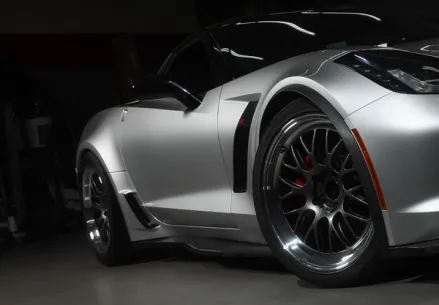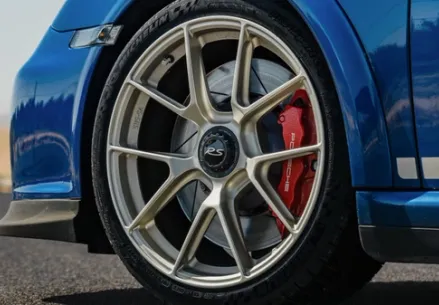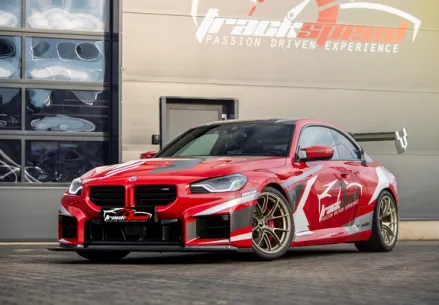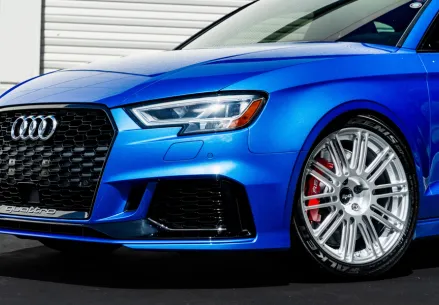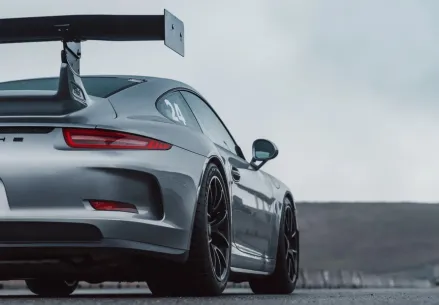
Everything You Need To Know About Wheel Fitments: Performance, Aesthetics, and Functionality
Article | 12/03/2024 by Geirsen Kalhagen
Updated on 12/11/2024
In this article, we will explore the basics of what wheel fitment is, the various styles of fitments commonly used, and how a wheel fitment affects the performance and appearance of a car.
Choosing the right set of wheels for your car can be a surprisingly overwhelming task. Between the abundance of technical terms used in the wheel industry, the large number of variables that can impact how a set of wheels will look (and more importantly, perform) on your car, and the highly specific requirements that different applications demand of a set of wheels, it can feel like a real challenge to make the right decision when buying wheels. If you’re new to the world of aftermarket wheels, the first thing you want to do is familiarize yourself with the concept of “wheel fitment.”
Only after you know what fitment is ideal for your needs can you figure out whether you require forged wheels or if a set of flow-formed wheels will work for your performance needs, and then you can consider what wheel hardware and accessories are needed to achieve that fitment.
If you are searching for chassis-specific fitment information for your vehicle, you can browse our in-depth wheel and tire fitment guides.
What is Wheel Fitment?
Fitment simply refers to how the wheels and tires are fitted or positioned on a car in relation to the fenders. The overall fitment of a car ultimately depends on the diameter, width, and offset of a wheel, but can also be affected by a car’s ride height and alignment specs.
While there are certain fitments that are used to accentuate a car’s performance, street car fitments are typically an extension of an individual’s appearance preferences. Some folks favor a more aggressive appearance, which can trade a bit of performance and comfort in street car applications for a race-ready look, while others prefer something with a more conservative look and driving feel.
A major part of why dialing in a car’s fitment can be a process and feel overwhelming at first is the need to find a balance between an aggressive look and a comfortable and functional ride. As such, there are quite a few different basic styles of wheel fitments – each with their own set of pros and cons.
To keep things simple, we will take a look at the five most common fitment types: tucked, flush, poke, stanced, and track.
Tucked Fitment
A “tucked fitment” is when the wheels and tires sit tucked in behind the fenders, which offers a more aggressive appearance. While some OEM wheel fitments can be considered tucked, a true tucked fitment typically involves a significant drop in ride height from stock, which is a common fitment style for those running air-ride suspension.
A tucked fitment does not effectively utilize all of the fender clearance available, which tends to leave some untapped performance on the table. WHY? In many cases, folks that swap their OEM wheels for an aftermarket option do so to alleviate the tucked look by running wheels that are wider and/or have lower offsets to push their wheel and tire setup closer to the fenders for a more aggressive appearance and improved grip.

Flush Fitment
A “flush fitment” is when the wheels and tires sit flush with the fenders, which maximizes the wheel and tire sizes you can run on a car. Not only does this drastically improve a car’s appearance, it also significantly increases the overall performance of a car as wider wheels and tires offer a larger contact patch and more grip.
A flush fitment is the most popular style of fitment and is the fitment style we target for when developing new wheel sizes for different chassis. Due to the tighter fender clearances that result from running a flush fitment, certain vehicles and wheel/tire setups may require supporting mods like fender-rolling or dialing-in additional negative camber to keep your tires from rubbing against the fenders while driving.

Poke Fitment
A “poke fitment” is when the wheels and tires poke out past the fenders, which can cause rubbing issues under suspension compression or with certain steering angles. Poke fitments tend to look a bit off because of this extra “wheel poke” and can betray the lines of a car in most cases.
A poke fitment is typically caused by installing wheels and tires that are too aggressive in size and offset for a specific vehicle, or by not doing the supporting mods required to fit a particularly aggressive wheel and tire setup.
In the case of more aggressive track-focused fitments, additional camber and fender modifications are typically required to make a fitment with poke on a stock car fit flush.

Stance Fitment
A “stance fitment” is typically the result of installing an aggressive set of wheels and tires on a car with extensive suspension, camber, and fender modifications to achieve a specific look.
Most stance cars are defined by extremely low suspension setups that have a ton of negative camber dialed-in to get the top of the wheels and tires to fit perfectly flush with the fenders. The negative camber gives the car a “slanted wheels” look. These cars are built with aesthetics as the priority, and stance fitments do not offer any performance advantage the way other fitment styles do – especially as most stance-style cars run slimmer tires that are stretched over a larger wheel.

Track Fitment
A “track fitment” is the result of a wheel and tire setup being selected specifically for their performance and handling characteristics. Track fitments typically involve wider wheels in smaller diameters, which are designed to maximize your options for tire size and help reduce unsprung weight to maximize a car’s possible grip and handling performance.
In most cases, track fitments are not ideal for stock cars as they are designed to be used with track-focused suspension and camber modifications, which are typically required to ensure a car can take full advantage of the performance upgrade these wheel and tire combinations offer and to make sure they fit without any clearance or rubbing issues.

How To Choose a Wheel Fitment
While the above fitments are the most common, something to consider is that every application and every driver will have a slightly different ideal for their car, and there’s a gray area between all of the above that may work best for you. Having a clear idea of your fitment priorities – whether it’s aesthetically-focused, performance-minded, or a happy medium between the two – will help you narrow down your wheel search and find the ideal setup for your build and its application.
One of the best resources you can utilize to help find the specific wheel and tire specifications required to achieve your preferred fitment style is our vehicle-specific fitment guides. You can browse all of our wheel and tire recommendations for your specific application via the link below our fitment guides: Apex Vehicle Fitment Guides.
Tags
 Geirsen Kalhagen
Geirsen KalhagenGeirsen K.
Geirsen (pronounced “gear-sen”) has been a Product Expert at APEX Wheels for more than four years, specializing in VW/Audi and BMW wheel fitments. Prior to joining APEX, he worked for five years in various roles at a BMW dealership, including detailing, service, and BMW Genius. During this time he participated in multiple, corporate training classes in the technical and motorsport aspects of new BMW models. The first car he ever purchased, at the ripe old age of 17, was an E46 325i sedan. That car introduced him to the automotive enthusiast world and instilled a passion for driving that has continued to grow ever since. More recent rides include a Z4M coupe and a 2011 335i, both of which allowed him to further expand his driving skills at HPDEs. Fun Fact: After picking up a Tacoma in his home state of Washington, Geirsen now tows his boat to the river more often than he tows a car to the track.
Have questions about wheels for your VW/Audi, or BMW? Use our contact form and ask for Geirsen.
If you like cheap gear you will hate this newsletter.
